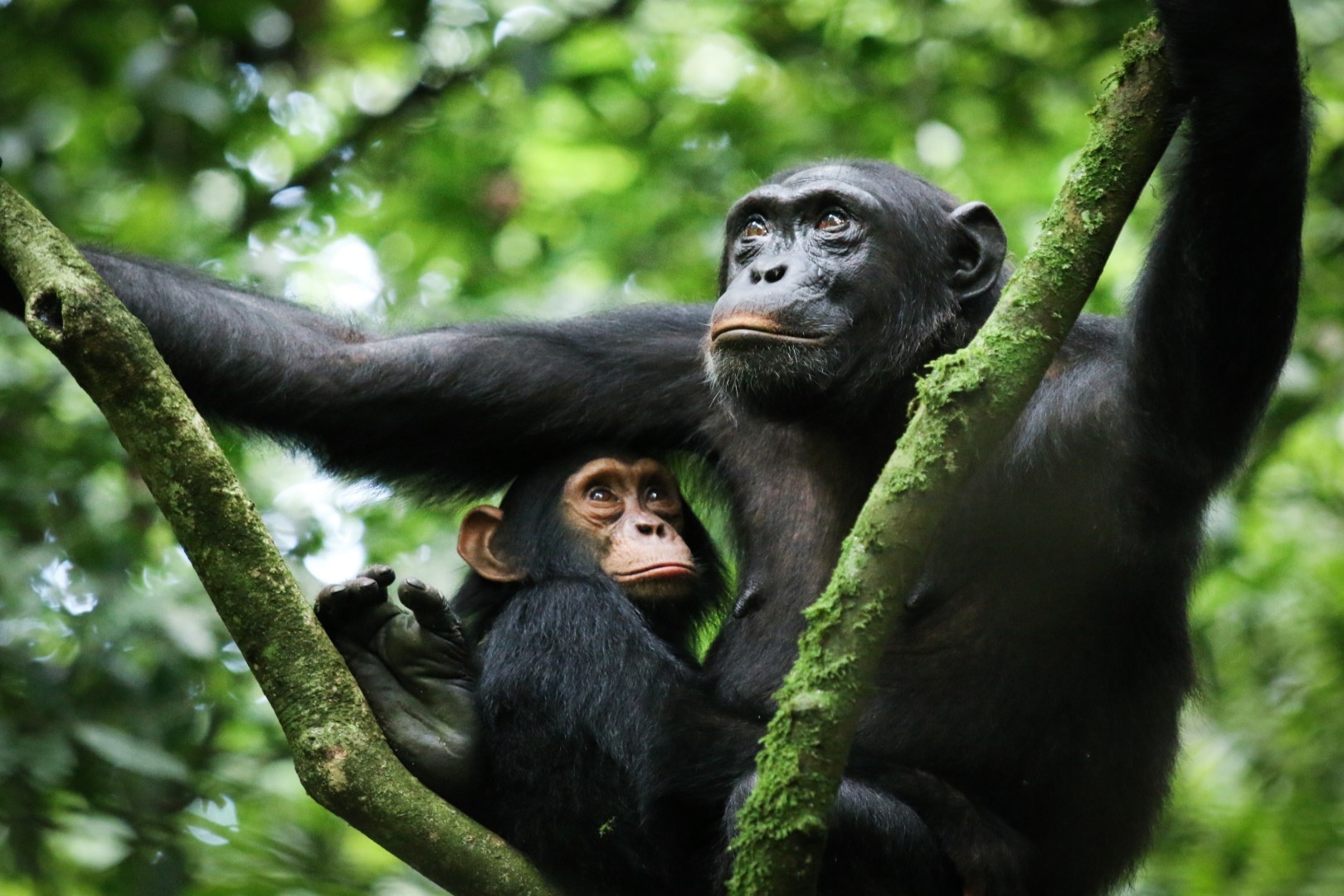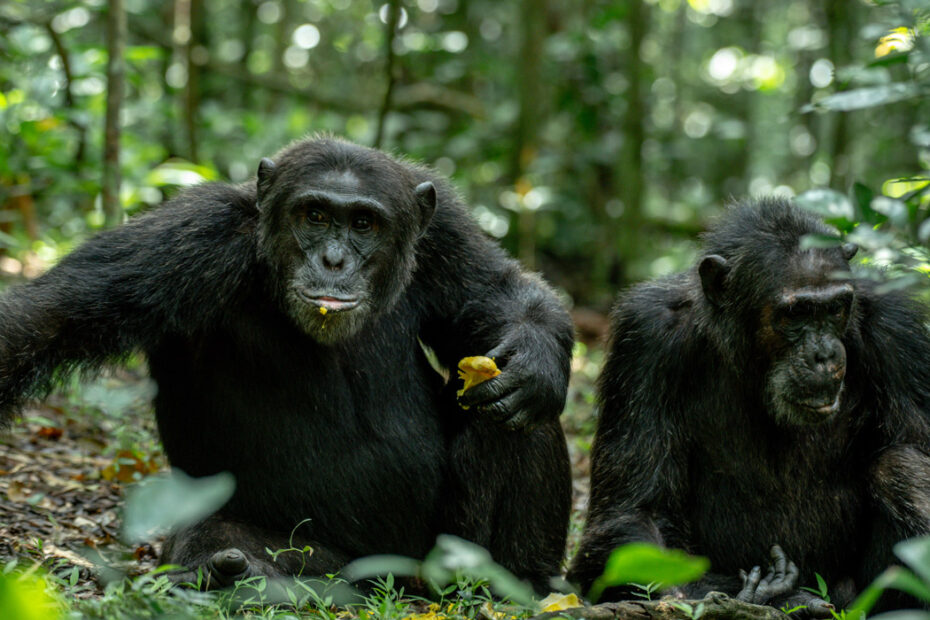
Best Time for Chimpanzee Trekking in Uganda
Best Time for Chimpanzee Trekking in Uganda. Chimpanzee trekking in Uganda is one of the most sought-after wildlife experiences in East Africa. This adventure offers a rare chance to step into the dense tropical forests, where these highly intelligent and social primates thrive in their natural habitats. The trek not only provides the thrill of tracking these fascinating creatures but also the opportunity to witness their day-to-day behaviors, social interactions, and family dynamics up close. However, like most wildlife experiences, the success and enjoyment of chimpanzee trekking are highly dependent on timing. To maximize your experience, understanding the best time for chimpanzee trekking in Uganda is crucial. In this blog, we’ll dive into the various factors that influence the best time for this adventure, including weather patterns, accessibility, and overall chimpanzee behavior.

-
Understanding Uganda’s Weather Patterns
Uganda enjoys a tropical climate, characterized by two distinct seasons: the dry season and the rainy season. While it’s possible to go chimpanzee trekking year-round, each season brings unique conditions that can either enhance or hinder your experience.
The Dry Seasons (December to February and June to August)
The dry season is widely considered the best time for chimpanzee trekking in Uganda. Between December and February, and again from June to August, the country experiences less rainfall, making forest trails more accessible and easier to navigate. During these months, the chances of rain disrupting your trekking adventure are minimal, which means that the forest floor is drier and less muddy, leading to a more comfortable trekking experience.
Additionally, the dry season coincides with a high abundance of food for chimpanzees, particularly fruits, making it easier to spot them as they spend more time feeding in the trees. In fact, chimps are known to move in large groups during this time, which increases your chances of sighting multiple individuals at once. The relatively clearer skies also provide better lighting for photography, ensuring you capture memorable shots of the chimps in their natural surroundings.
The Rainy Seasons (March to May and September to November)
Although not the most popular time for chimpanzee trekking, the rainy season still offers a unique set of experiences. From March to May and September to November, Uganda experiences more frequent and intense rainfall. This results in wetter and muddier trekking trails, making the trek more challenging, particularly as you traverse the dense undergrowth in search of the chimps. However, for the adventurous and experienced trekker, this season offers some compelling reasons to consider.
Firstly, the rainy season typically means fewer tourists. If you’re seeking a more intimate and less crowded experience, this is the time to go. With fewer people on the trails, you’ll enjoy a quieter, more immersive experience in the forest. Secondly, the forest is lush and vibrant during this period, thanks to the rains. The flourishing vegetation creates a picturesque backdrop, with rich greenery and thriving ecosystems that provide an unparalleled sensory experience.
Moreover, while chimps tend to be less active during the rains, preferring to stay within the denser forest canopies, the chances of encountering them are still relatively high, as experienced guides know the locations they frequent. For passionate wildlife enthusiasts and photographers, the rainy season’s soft lighting and forest ambiance offer opportunities for capturing unique images, despite the wetter conditions.
-
Accessibility and Accommodation
Aside from weather conditions, another factor that affects the best time for chimpanzee trekking in Uganda is accessibility. Uganda’s national parks, particularly Kibale National Park, Kyambura Gorge, and Budongo Forest, where chimpanzee trekking takes place, have varying levels of accessibility depending on the season.
Dry Season Accessibility
During the dry months, roads leading to the national parks are in much better condition. The risk of flooding and impassable roads is significantly reduced, making it easier to reach remote trekking areas. For instance, Kibale National Park, renowned as Uganda’s prime chimpanzee trekking destination, is more accessible via road during the dry season, and you’re less likely to experience delays caused by poor road conditions.
In terms of accommodation, lodges and campsites tend to be busier in the dry season, with more visitors flocking to the parks for wildlife safaris and trekking experiences. As a result, it’s advisable to book your permits, accommodation, and travel arrangements well in advance to secure a spot during this peak period. However, the advantage is that many lodges offer full amenities and services during the dry season, ensuring your stay is comfortable and enjoyable.
Rainy Season Accessibility
Conversely, the rainy season can pose some challenges in terms of accessibility. Roads, especially in rural areas surrounding the national parks, can become muddy and difficult to navigate. If you’re visiting during this time, it’s advisable to travel in a sturdy 4×4 vehicle to avoid getting stuck in the mud or delayed due to poor road conditions. Despite these challenges, many experienced tour operators ensure that visitors can still reach the parks, offering alternative routes and support for off-road conditions.
Accommodation during the rainy season tends to be more affordable, with some lodges offering discounted rates due to the lower number of visitors. This makes it an appealing time for budget-conscious travelers who don’t mind the additional challenges posed by the weather. However, it’s important to choose lodges that remain operational throughout the rainy season to avoid any disruptions to your plans.
-
Wildlife Activity and Behavioral Patterns
Chimpanzee behavior is another key aspect to consider when planning your trekking adventure in Uganda. Different seasons influence the availability of food sources and overall chimpanzee activity, impacting your chances of encountering them up close.
Chimpanzee Behavior in the Dry Season
During the dry season, chimpanzees are highly active, and their movements are relatively predictable. With an abundance of food sources, they often roam within specific areas of the forest in search of fruits and other edible vegetation. As they spend more time on the ground and in open spaces, the likelihood of encountering them at eye level increases. This provides an excellent opportunity for trekkers to observe their social dynamics, grooming habits, and interactions with one another.
Additionally, chimpanzees tend to be more vocal during this period, using loud calls to communicate with other members of their troop. This makes it easier for trekking guides to track their movements and lead you to their location. The dry season, therefore, offers not only the best viewing opportunities but also the chance to witness chimps in a more relaxed and natural state.
Chimpanzee Behavior in the Rainy Season
On the other hand, during the rainy season, chimpanzees tend to stay within denser areas of the forest, seeking shelter from the rain. While this may make them slightly harder to find, they are still present and active. Experienced guides rely on their deep knowledge of the forest and the chimps’ behavioral patterns to lead trekkers to the right spots.
One advantage of trekking in the rainy season is that chimps often move in smaller groups, and the absence of large crowds allows for a more personal interaction. You might even witness rarer behaviors, such as nest building or intimate grooming sessions that are less frequently observed during the dry months when the chimps are more focused on foraging for food.

Conclusion: Choosing the Best Time for You
Ultimately, the best time for chimpanzee trekking in Uganda depends on your personal preferences, budget, and tolerance for weather conditions. If you prefer more comfortable trekking conditions, clearer trails, and higher chances of spotting larger groups of chimpanzees, the dry season (December to February and June to August) is the ideal time. On the other hand, if you seek a quieter experience with fewer tourists, lower accommodation costs, and a lush, green forest setting, the rainy season (March to May and September to November) can provide an equally rewarding adventure.
Regardless of when you choose to visit, chimpanzee trekking in Uganda is an extraordinary experience that offers deep insights into the world of these remarkable primates. Proper planning, accompanied by an understanding of the seasonal conditions, will ensure that your journey through Uganda’s rich and biodiverse forests is a truly unforgettable one.
Related Posts;






